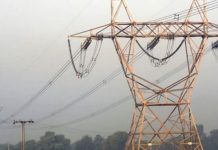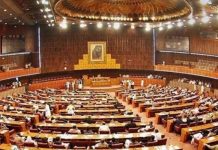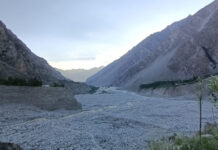Successive administrations of Pakistan have never stopped reassuring the people that they have resolved the electricity issue and barring targeted load-shedding done in areas where electricity theft is massive the power supply would not suffer any massive rupture.
They also confidently asserted that the widespread blackout had become a thing of the past and would not happen again. Unfortunately, the reassurances proved hollow as the country suffered a national blackout last week without any apparent reason making pushing back the country decades. The blackout was reported a little before midnight by citizens on social media from across the country, including major urban centres as well as smaller towns and cities.
The official version of the disruption was that Guddu power plant developed a fault and within a second, the frequency dropped. It was explained that in technical terms, this caused a cascade effect and one after the other the safety systems of the power plant began to shut down. It was termed as similar to a fuse blowing which has to be manually reset and the power plant being shut down had affected the entire country.
It was further stated that the precise reasons for the breakdown were not ascertained as the intense fog made it almost impossible to see anything at the Guddu power plant. The fault caused the country’s high transmission lines to trip, which in turn caused the system frequency to drop from 50 to 0 in less than a second and the drop in frequency caused power plants to shut down plunging the country into darkness.
The breakdown highlights Pakistan’s chronic infrastructure challenges, especially the inability of successive governments to resolve long-term challenges surrounding its electricity transmission networks. Although power outages are common in Pakistan but this failure showed that between 80 to 90 percent electricity supply was suspended in a few seconds reflecting a complete breakdown of governance in the power sector.

The widespread theft of electricity as illegal power connections proliferate putting the sector in
trouble and the situation is further aggravated when the entire sector is beset with endemic corruption. There have been allegations that some electricity company officials have colluded with consumers to set up connections linked straight to power transmission lines rather than going through a meter.
The country’s main electricity supply companies have repeatedly run at a loss, prompting Pakistan’s western lenders to urge immediate remedial measures.
A $6 billion loan from the IMF agreed in 2019 to help Pakistan stave off a debt crisis has been stalled, partly because of the prime minister’s refusal to accept an increase in electricity prices that would be unpopular with voters.
It was noted that the PTI government has become increasingly averse to adopting unpopular measures as Pakistan’s political opposition has stepped up its protests against the government that is accusing the government of winning the 2018 elections with the backing of its supporters in the establishment.
The opposition also accuses the government of sheer incompetence and describe it as pursuing policies that are bound to further burden the country.
It is also reported that the problem with Pakistan’s electricity grid was the result of under-investment in transmission and distribution networks, which means that about a third of electricity generated is lost during transmission or due to discrepancies in the billing system.
Successive governments have highlighted increased production of electricity but have paid no attention to the supply system that is in a mess.
The extremely battered supply network is actually causing more problems to the electricity transmission than any other factor. The problem is that it needs much more investment to fix the supply system and many international donors have shown a marked reluctance to fund such massive outlay.
During the blackout, the government urged citizens to remain calm as airports, hospitals and other key locations across the country were also affected. The fact that the breakdown occurred at almost midnight in the winter season did not bring great difficulty to the people.
If such a situation had arisen during the day and particularly during the summer then matters would have been radically different.
The electricity tariffs are now reported to be the highest in the region and it has become almost impossible for the people to pay their electricity bills.
The difficulty is that the financial resources at the disposal of the government are not enough to rectify the situation. Another problem is the inefficiency of the people working in the power industry who have been employed mostly through favour and are not properly trained to discharge their responsibilities.
The power sector is beset by obsessive regulatory organisations that suffer from a serious lack of coordination and are usually involved in continuous bickering. The prospects of the sector appear bleak and it is quite evident that the country may suffer the repeat of what happened last week.
The nationwide blackout has bought the focus back on the need for to overhaul the collapsing power sector and improving governance for reliable electricity supply to the people.
It is now open knowledge that poor maintenance of the power system led to failure of the safeguards and caused the breakdown. The main blame falls on the personnel associated with who are unaware of its technicalities and are not properly trained. It is widely believed that with the professional,trained people sidelined, the entire system is being run on a day-to-day basis by the powerful bureaucrats who have little understanding of the sector.

It was pointed out that there are plenty of factors ranging from human error to equipment failure to environmental effects responsible for pushing generation plants to automatically shut down.
The possibility cannot be ruled out that such disturbances occurred in a transmission system that was designed for normal weather conditions decades ago and the size of which has more than doubled during the last few years implying that appropriate changes were not devised for present environmental conditions.
Significantly, this was not the only breakdown of its kind as in the past the country has experienced many partial or complete power breakdowns and the quite recent one took place in January 2019, when a similar problem at Guddu led to a major power failure across Sindh and Balochistan.
In May 2018, a widespread breakdown in NTDC’s system caused power shutdown in Punjab and Khyber Pakhtunkhwa. In 2015, terrorists attacked a transmission line, plunging almost 80 per cent of the country into darkness.
The official reason advanced for the current mishap is that the lack of investment in transmission system is behind it but this contention is not very valid as in summers, when the electricity demand is at its peak, the same system can transmit and distribute over 24,000 megawatts of electricity without any problem.
It is therefore mentioned that according to the laid down order of priorities, authorities give priority to generation from more efficient plants that produce cheaper electricity and which are mostly located in the southern parts of the country.
With 75 per cent demand coming from Punjab and Khyber Pakhtunkhwa and cheaper power flowing in from south the fault in the Guddu power plant split the southern and northern distribution networks, creating surplus in southern regions and causing deficit in northern areas.
That ignited the system safeguards, causing all power plants to shut down automatically. It is emphasised that that the authorities dealing with power sector should devise separate set of priorities for winters to split generation and distribution networks between southern and northern regions to contain any cascading effect spreading across the country.
This article originally appeared in The Weekender and has been reproduced with permission





























